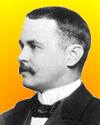
Sir Ronald Ross, an English physicist, bacteriologist and mathematician died on 16 Sep 1932. He was the first Briton to be awarded a Nobel Prize, for his research that identified the Anopheles mosquito as the carrier of the malaria parasite. In 1899, he published Instructions for the Prevention of Malarial Fever: For the Use of Residents of Malarious Places. It is another opportunity to read of the work of a scientist in his own words, as he outlines the key points to know about malaria, and some facts on mosquitos. If you don't know whether a mosquito may live for hours, days, weeks, or months, you can learn that answer within this feature article.
The International Day for the Protection of the Ozone Layer was proclaimed as 16 Sep by the United Nations General Assembly (19 Dec 1994). As a second feature view the artistic 30-second video, The Drummers, made in 2007 as a TV public service announcement for the year that celebrated the 20th anniversary of the signing of the Montreal Protocol.

When Gordon Gould died on 16 Sep 2005, he had spent 30 years of his life battling the U.S. Patent Office to have his claim recognized as the inventor of the laser. Gould had the idea, and had it time-stamped before anyone else. His idea was brought to practical form by Ted Mainman. Townes and Schawlow made significant contributions. Together, they introduced one of the key technologies of the twentieth century. Today's book pick is: Laser: The Inventor, the Noble Laureate, and the Thirty-Year Patent War, by Nick Taylor, who outlines the patent dispute, and its long litigation. Although Gould was not the first to build a working laser, that is not required to secure the first patent. Gould had described the invention in sufficient detail for someone else “skilled in the art” to construct it. That has always been the key to obtaining patent rights, and to subsequent compensation. The author of this book has an appreciation for the human drama of scientific discovery and intertwines it with the legal drama and the bullying from corporatations. The plot builds to the final victorious courtroom argument.
It is available from Amazon, typically about New from $35.00. Used from $1.07. (As of earlier time of writing - subject to change.)
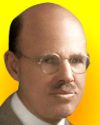 | America forms the longest and straightest bone in the earth's skeleton. |
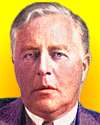 | Put three grains of sand inside a vast cathedral, and the cathedral will be more closely packed with sand than space is with stars. |
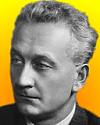 | A discovery must be, by definition, at variance with existing knowledge. During my lifetime, I made two. Both were rejected offhand by the popes of the field. Had I predicted these discoveries in my applications, and had those authorities been my judges, it is evident what their decisions would have been. |
| Before you look at today's web page, see if you can answer some of these questions about the events that happened on this day. Some of the names are very familiar. Others will likely stump you. Tickle your curiosity with these questions, then check your answers on today's web page. | |
| Births | |
 | Albert Szent-Gyorgyi, born 16 Sep 1893, was Hungarian biochemist whose discoveries concerning the roles played by certain organic compounds in the oxidation of nutrients by the cell brought him the 1937 Nobel Prize for Physiology or Medicine. Which organic compound in particular did he examine? |
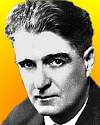 | On 16 Sep 1877, the inventor of the electric razor was born Can you name this inventor? |
| Deaths | |
 | The English physicist, astronomer, and mathematician who died 16 Sept 1946, was the first to propose that matter is continuously created throughout the universe. Can you name this man? |
 | A German physicist (1686-1736) who lived in Holland for most of his life was involved in the manufacture of meteorological instruments. In 1714, he created the first thermometer to use mercury instead of alcohol. He originally took as the zero of his scale the temperature of an equal ice-salt mixture. Of course, you name this scientist, but what is his first name? |
| Events | |
 | On 16 Sep 1835, aboard the ship HMS Beagle, British naturalist Charles Darwin arrived at a cluster of islands on the equator 600 miles west of South America. During his five weeks studying the fauna there, he found the giant tortoises there greatly differed from one another according to which island they came from. What islands were these? |
 | On 16 Sep 1908, former carriage-maker William Crapo "Billy" Durant founded an American automobile company. Unlike Henry Ford, his name is little recognized today, though his company remains well-known. Which automobile company did Durant found? |
Fast answers for the previous newsletter for September 15: quarks • shoe-lasting machine • Willy Messerschmitt • banking • made of dust from the impacts of cosmic bodies that crashed into Jupiter's moons • George Stephenson.
 If you enjoy this newsletter, the website, or wish to offer encouragement or ideas, please send feedback by using your mail reader Reply button.
If you enjoy this newsletter, the website, or wish to offer encouragement or ideas, please send feedback by using your mail reader Reply button. Your click on a Facebook, StumbleUpon, or other social button on the site webpages is also a welcome sign of appreciation. Thank you for using them.
© This newsletter is copyright 2020 by todayinsci.com. Please respect the Webmaster's wishes and do not put copies online of the Newsletter — or any Today in Science History webpage. (If you already have done so, please remove them. Thank you.) Offline use in education is encouraged such as a printout on a bulletin board, or projected for classroom viewing. Online, descriptive links to our pages are welcomed, as these will provide a reader with the most recent revisions, additions and/or corrections of a webpage. For any other copyright questions, please contact the Webmaster by using your mail reader Reply button.
--
If you do not want to receive any more newsletters, Unsubscribe
To update your preferences and to unsubscribe visit this link
Executive Real Estate Business Class
-
"It was like a man with wings. It wasn't like anything you'd see on TV or in a monster movie." ...
About the publisher
Search This Blog
Blog Archive
-
▼
2020
(1542)
-
▼
September
(173)
- SCIENCE: Just how big is Everest?
- The Latest News from History News Network
- On This Day for September 30 - Munich Agreement si...
- We are called to return to our foundational values...
- Newsletter for Wednesday 30 September.
- They Killed His Wife And Left Him For Dead – Then ...
- TRAVEL: Telling new truths about America’s histori...
- Make learning fun with Nat Geo Kids magazine! Subs...
- On This Day for September 29 - British mandate in ...
- Newsletter for Tuesday 29 September.
- Special Edition: Dinosaurs come to life like never...
- September 29: On This Day in History
- HISTORY: America's most endangered historic sites
- New This Week on History News Network
- On This Day for September 28 - California “discove...
- Newsletter for Monday 28 September.
- September 28: On This Day in History
- FAMILY: What do I tell my kids about wildfires and...
- On This Day for September 27 - Norman Conquest beg...
- Newsletter for Sunday 27 September.
- September 27: The Rosetta Stone, E=mc² and Fear as...
- The Compass: Indonesia
- On This Day for September 26 - First televised U.S...
- Newsletter for Saturday 26 September.
- September 26: Frances Drake's Circumnavigation, th...
- CORONAVIRUS UPDATE: Is this the end of the office?
- PHOTOGRAPHY: They feed us. Now we see them.
- The assassination of Lord Mountbatten | Enola Holm...
- 39,500-Year-Old Cave Bear Discovered Perfectly Pre...
- On This Day for September 25 - Pacific Ocean sight...
- The Roundup Top Ten for September 25, 2020
- Newsletter for Friday 25 September.
- September 25: Battle of Stamford Bridge, Remote Co...
- ANIMALS: These mighty elephants find peace
- On This Day for September 24 - Federal troops sent...
- Newsletter for Thursday 24 September.
- Global cartels taking control of the world + HPA B...
- September 24: Decline of the Byzantine Empire, Ope...
- YOUR WEEKLY ESCAPE: America's oldest mystery
- SCIENCE: How to cope with a big death toll
- The Latest News from History News Network
- On This Day for September 23 - Neptune observed, J...
- Newsletter for Wednesday 23 September.
- September 23: Nintendo, the Start of Data Processi...
- TRAVEL: How will America’s state parks survive?
- Matching gift opportunity for Sumatran rhinos
- On This Day for September 22 - Solidarity formed, ...
- Newsletter for Tuesday 22 September.
- September 22: Salem Witch Trials, Iraq's Invasion ...
- HISTORY: Who can replace RBG?
- Feed their curiosity! Get Nat Geo Kids magazine fo...
- New This Week on History News Network
- On This Day for September 21 - Joseph Smith's visi...
- Newsletter for Monday 21 September.
- September 21: France, China and a Sheep Shearing R...
- FAMILY: Don’t tell your kids outdated stuff about ...
- On This Day for September 20 - Rome incorporated i...
- Pro-life is not Politics + Vickie Travis's message...
- Newsletter for Sunday 20 September.
- September 20: Attila the Hun, Magellan's Circumnav...
- The Compass: Chile
- Matching gift opportunity for Sumatran rhinos
- On This Day for September 19 - George Washington's...
- Newsletter for Saturday 19 September.
- CORONAVIRUS UPDATE: Young people are spreading the...
- September 19: 1st Country to Grant Women the Right...
- PHOTOGRAPHY: How to make dinos look new (CORRECTED)
- Quick Note: How to Save Videos by Downloading
- PHOTOGRAPHY: How to make dinos look new
- The Mayflower | Medieval spiders | Ancient Egypt f...
- When She Found Out Her Boyfriend Was A Serial Kill...
- The Roundup Top Ten from History News Network
- On This Day for September 18 - Mukden seized by Ja...
- Newsletter for Friday 18 September.
- "Truth Crushes Evil" + We're Winding down + What ...
- YOUR WEEKLY ESCAPE: The country that doesn't exist
- September 18: Great Fire of Moscow, the CIA and El...
- ANIMALS: How U.S. officials stopped the flying squ...
- Two New Podcasts From HISTORY
- Don't miss out: back to school savings for learner...
- On This Day for September 17 - Camp David Accords ...
- Newsletter for Thursday 17 September.
- September 17: Bloodiest Day in the American Civil ...
- SCIENCE: He found part of a one-of-a-kind dinosaur
- SPECIAL REPORT: How the West is primed to burn
- The Latest News from History News Network
- On This Day for September 16 - Mayflower's departu...
- Newsletter for Wednesday 16 September.
- September 16: French Abolish Slavery, Malaysia For...
- TRAVEL: Will slowing down help you get stronger?
- Special Report: How do we end this pandemic?
- On This Day for September 15 - Central Americans g...
- Newsletter for Tuesday 15 September.
- September 15: Darwin Reaches the Galapagos, Penici...
- HISTORY: How the U.S. battled catastrophic wildfir...
- BREAKING NEWS: Possible evidence of life found on ...
- Discover Remarkable Leaders With Nat Geo History M...
- On This Day for September 14 - Mexico City capture...
- New This Week on History News Network
- Newsletter for Monday 14 September.
-
▼
September
(173)
-
Blogroll
-
About
HistoryFact










I generally want quality content and this thing I found in your article. It is beneficial and significant for us. Keep sharing these kinds of articles, Thank you. exterminator Sydney
ReplyDelete